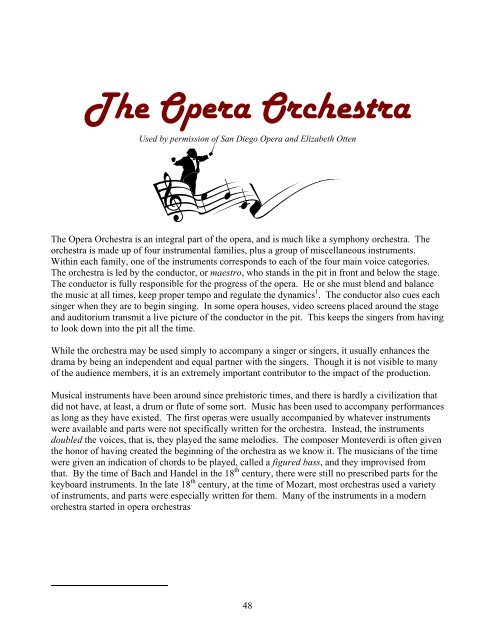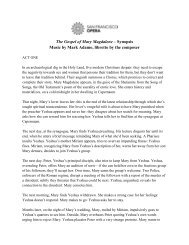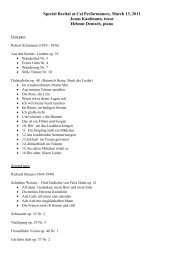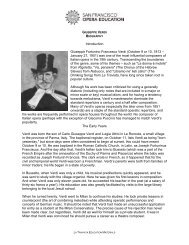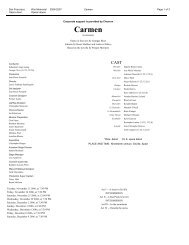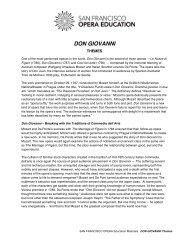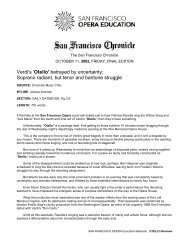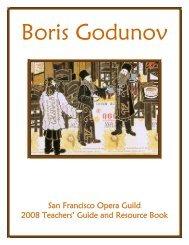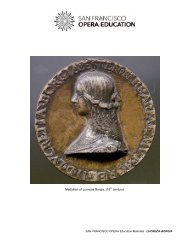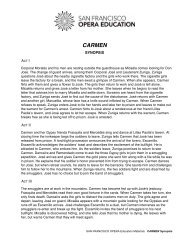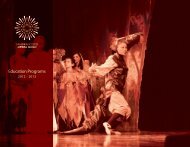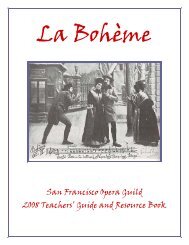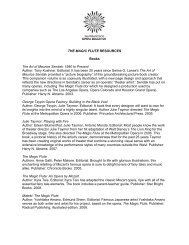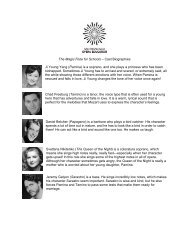The Rake's Progress Teachers Guide - San Francisco Opera
The Rake's Progress Teachers Guide - San Francisco Opera
The Rake's Progress Teachers Guide - San Francisco Opera
Create successful ePaper yourself
Turn your PDF publications into a flip-book with our unique Google optimized e-Paper software.
<strong>The</strong> <strong>Opera</strong> Orchestra<br />
Used by permission of <strong>San</strong> Diego <strong>Opera</strong> and Elizabeth Otten<br />
<strong>The</strong> <strong>Opera</strong> Orchestra is an integral part of the opera, and is much like a symphony orchestra. <strong>The</strong><br />
orchestra is made up of four instrumental families, plus a group of miscellaneous instruments.<br />
Within each family, one of the instruments corresponds to each of the four main voice categories.<br />
<strong>The</strong> orchestra is led by the conductor, or maestro, who stands in the pit in front and below the stage.<br />
<strong>The</strong> conductor is fully responsible for the progress of the opera. He or she must blend and balance<br />
the music at all times, keep proper tempo and regulate the dynamics 1 . <strong>The</strong> conductor also cues each<br />
singer when they are to begin singing. In some opera houses, video screens placed around the stage<br />
and auditorium transmit a live picture of the conductor in the pit. This keeps the singers from having<br />
to look down into the pit all the time.<br />
While the orchestra may be used simply to accompany a singer or singers, it usually enhances the<br />
drama by being an independent and equal partner with the singers. Though it is not visible to many<br />
of the audience members, it is an extremely important contributor to the impact of the production.<br />
Musical instruments have been around since prehistoric times, and there is hardly a civilization that<br />
did not have, at least, a drum or flute of some sort. Music has been used to accompany performances<br />
as long as they have existed. <strong>The</strong> first operas were usually accompanied by whatever instruments<br />
were available and parts were not specifically written for the orchestra. Instead, the instruments<br />
doubled the voices, that is, they played the same melodies. <strong>The</strong> composer Monteverdi is often given<br />
the honor of having created the beginning of the orchestra as we know it. <strong>The</strong> musicians of the time<br />
were given an indication of chords to be played, called a figured bass, and they improvised from<br />
that. By the time of Bach and Handel in the 18 th century, there were still no prescribed parts for the<br />
keyboard instruments. In the late 18 th century, at the time of Mozart, most orchestras used a variety<br />
of instruments, and parts were especially written for them. Many of the instruments in a modern<br />
orchestra started in opera orchestras .<br />
48


